
July 17-24 live war map: Toretsk vs. Pokrovsk - Russia's next move?
Pokrovsk remains the primary focus of the Russian offensive, accounting for a quarter of all battles. The neighboring directions of Toretsk and Kurakhove are the next most intense, supporting the Russian strategy to advance toward the center of western Donetsk
Although the intensity of the fighting in the Kharkiv region has increased by 30%, and the Russian troops are preparing reserves for a new offensive, the situation on this front remains largely unchanged. Various positions and streets in Vovchansk and Hlyboke have changed hands multiple times in recent days.
Chasiv Yar: encirclement or direct assault
Throughout the week, invading Russian forces have repeatedly attempted to advance north of Chasiv Yar to cross the Siverskyi Donets canal and potentially encircle the town from this direction. They succeeded in pushing the Ukrainian Defense Forces out of the left-bank part of the village of Kalynivka and approached the area where the canal goes underground—this is a potential breakthrough point for Ukrainian defense, as no water crossing is needed here.
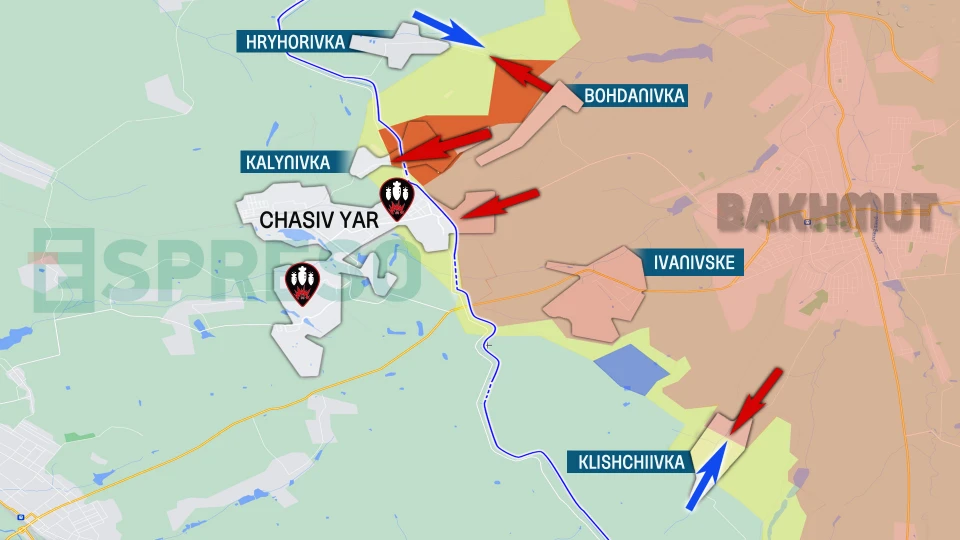
Additionally, they advanced 2 km west of Bohdanivka towards Hryhorivka. The latter is also located on the left bank of the canal. By capturing this village, Russia likely aims to stretch the defense line along the canal to increase the number of potential crossing points. In Chasiv Yar itself, there are two more sections where the canal goes underground—these are currently the main focus of the Russian forces.
Meanwhile, further south, the invading Russian forces have been unable to break the Ukrainian defenses in Klishchiivka and Andriivka. Holding these two villages significantly complicates the Russian plans both on the Chasiv Yar front and the neighboring Toretsk front.
Toretsk – the main battleground for Donetsk region
Russian troops understand that if they capture Toretsk, they will significantly complicate Ukraine’s defense of all other cities in the Donetsk region: Chasiv Yar, Kostiantynivka, and Pokrovsk, since Toretsk currently blocks the bypass routes to them. Therefore, the invading Russian forces are gradually pulling more resources here, and the fighting around the town is becoming more intense each week. Currently, Russia is capturing the eastern and southern outskirts of Toretsk, approaching Ukrainian fortified positions. Specifically, over the past week, they have taken part of the Pivdenne district and advanced in the Zalizne area, coming close to one of the town’s main roads – Tsentralna Street, which connects Toretsk with New York.
At the same time, considering the landscape, the large number of bodies of water and slag heaps, the significant industrial zone, and the defensive positions built over the years by the Ukrainian Defense Forces, the battle for the town will resemble the battles for Bakhmut, Avdiivka, or Chasiv Yar and promises to be prolonged.
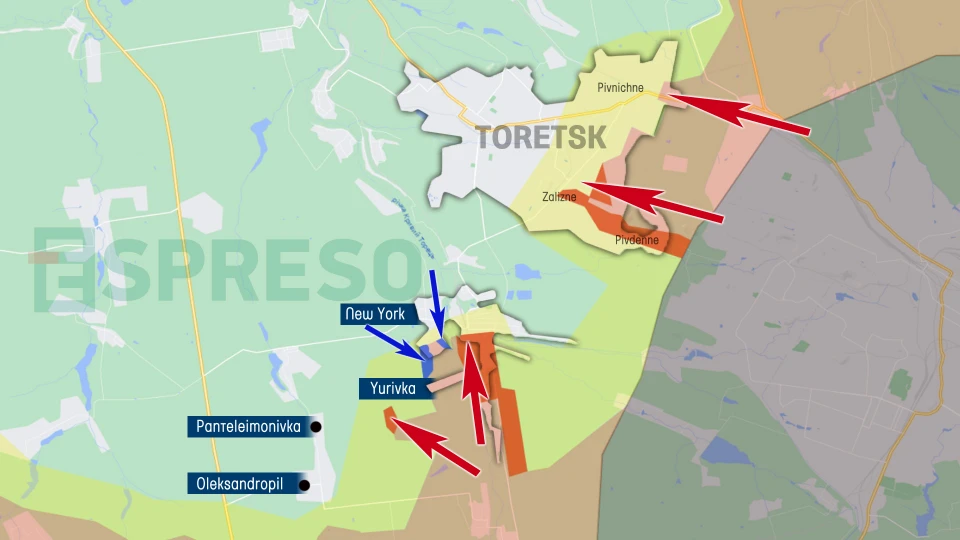
Will Biden save New York?
Biden has promised to dedicate the last months of his presidency to the war in Ukraine. Perhaps he should pay attention to the village of New York, which is currently suffering from Russian assaults. It could be a matter of his honor to prevent the Russian army from capturing New York.
Currently, Russian forces have expanded their control in the southern part of the village, advancing towards the neighboring village of Panteleimonivka. Additionally, they have even managed to cross the Kryvyi Torets River in the central area along the railway. This poses a significant threat to the defense of New York, although the village still holds many surprises for the invading forces. Thus, the advance of the Russian forces into the town has significantly slowed, and they are now focused on capturing the outskirts. They are likely to attempt to link up with the forces attacking the Pivdenne district in Toretsk soon. However, to do so, they will have to cross at least two rivers, which will not be an easy task.
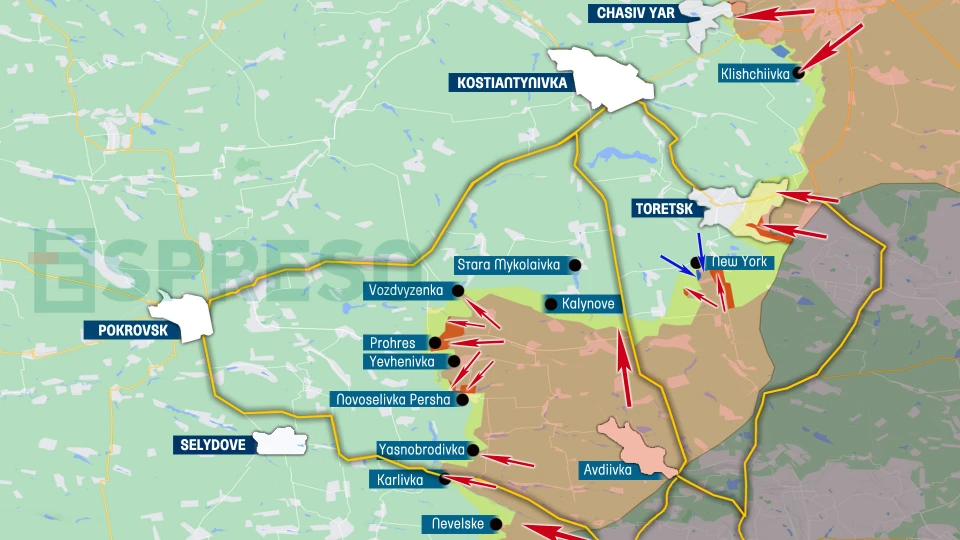
Pokrovsk is a key Russian target, or is it?
Despite the fact that the most fighting occurs on the Pokrovsk front, the number of battles has been decreasing in recent weeks, proportionally increasing on the neighboring Toretsk front. Thus, with limited resources, Russian troops are forced to choose which direction to concentrate their efforts on. This decision will be especially critical for them in August when the Ukrainian Armed Forces receive more ammunition and, likely, F-16s, making the guided bombs less effective than they are now. Hence, Russia is in a great hurry. The Toretsk front, along with the neighboring Kurakhove front, is the only section where Russian forces are advancing using armored vehicles. In the southern part of the front, there have been virtually no changes, although it is certain that soon they will push the Ukrainian Armed Forces entirely to the right bank of the Vovcha River. Currently, the Ukrainian Defense Forces are defending the southern part of the village of Novoselivka Persha, while the northern part has already been occupied by the invading Russian forces.
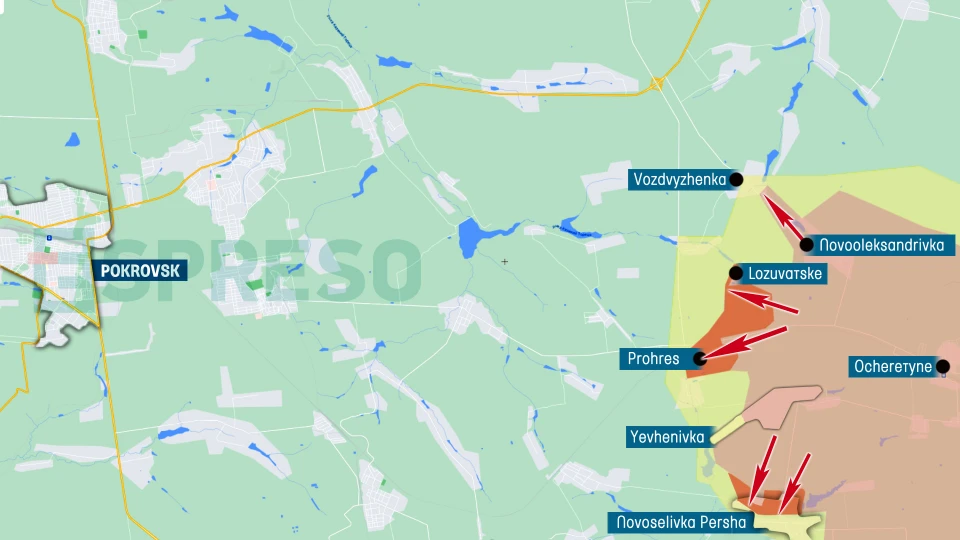
However, more dramatic events are unfolding further north, near the Lozuvatske and Prohres villages, where a fortified line of Ukraine’s defense was located. Russian forces have managed to break through about 1.5 km along the railway in the valley between the sources of the Vovcha and Kazennyi Torets Rivers and occupy both villages, which were Ukraine’s fortified positions. Meanwhile, the advance on Vozdvyzhenka, aiming to cut off the T-0504 Pokrovsk-Kostiantynivka highway, has somewhat slowed down. It appears that Russian troops are waiting until they can cover the flanks of their advance to avoid being surrounded themselves.
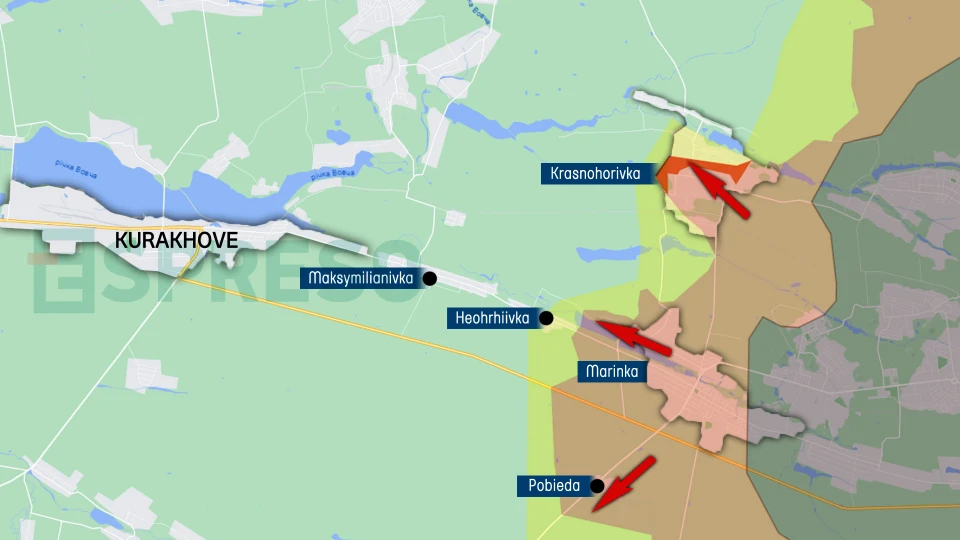
Kurakhove direction and Krasnohorivka
Advancing from Marinka with significant forces towards Heorhiivka, Russian troops lost over 30 pieces of armored equipment and completely failed the assault. However, the situation in Krasnohorivka is not as good: the Ukrainian troops are gradually losing the town, street by street. Currently, Russia has occupied about 75% of Krasnohorivka, and the Ukrainian Defense Forces hold only the northwestern part.
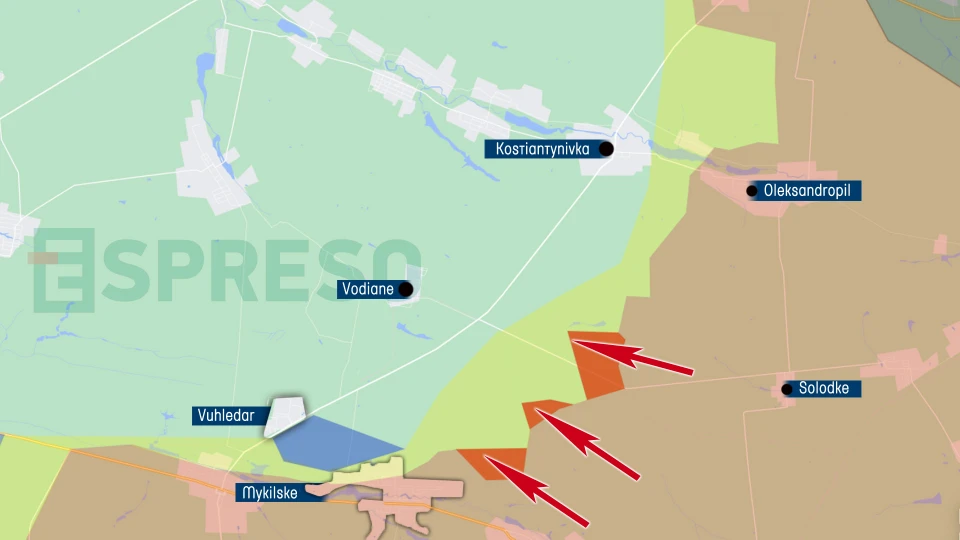
Threat of encircling Vuhledar
In this direction, Russian troops have again broken through 1.5 km towards one of the two key roads to Vuhledar. They have approached within 2.5 km of it, posing a threat to logistics. Additionally, they have further expanded their control zone east of the occupied Mykilske and are also approaching Vuhledar itself. Although this advance is progressing very slowly, over the past year, the invading Russian forces have covered half the distance to the eastern outskirts of the town. It is evident that here too they are sticking to their classic plan – to encircle Vuhledar from several sides before a decisive assault.
Ukraine’s strikes on Russia and Crimea
The Ukrainian Armed Forces, together with the Security Service (SBU) and the Defense Intelligence of Ukraine (DIU), continued to deliver targeted strikes on Russian sensitive points, focusing on airfields, energy facilities, and maritime infrastructure. Specifically, after an explosion at the Millerovo airfield in Russia’s Rostov region, the repair section and fuel depot were destroyed, although there is no evidence of aircraft destruction. At another airfield in the Rostov region, Morozovsk, positions of the S-300/400 air defense systems, the repair section, the fuel depot, the runway were damaged, and the location of fighter jets was hit. At the Primorsko-Akhtarsk airfield in the Krasnodar region, there were fires on the runway. Finally, a strike on the Luhansk airfield hit radar and air defense systems guarding the site. Most details about these strikes will become known later, but it is clear that the Russian air defense cannot stop Ukrainian drones, and these targets are becoming increasingly vulnerable. Thus, Russia will be forced to relocate its strike aircraft from these areas.
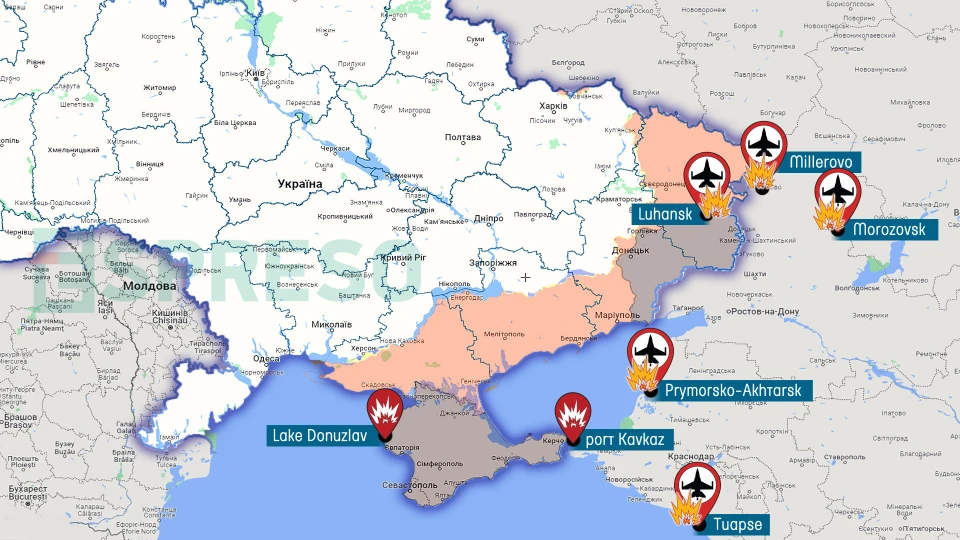
For the third time this year, Ukrainian UAVs hit the oil refinery in Tuapse, causing a large fire. Additionally, in the port “Kavkaz”, drones struck the ferry Slavyanin. A few days ago, the Ukrainian Armed Forces announced that the last patrol boat of the Russian Black Sea Fleet left Sevastopol for ports on the eastern coast. Meanwhile, the Ukrainian Defense Forces are destroying all possible naval targets in Crimea. Notably, after a massive missile and drone strike on infrastructure at Lake Donuzlav, the command post, ammunition and equipment depot, power substation, and Russian firing positions were destroyed.
The maps were created based on information received from the Ukrainian Armed Forces’ General Staff and other open and verified sources. At the same time, the maps are not as accurate as possible and only conditionally reflect trends in the combat zone.
- News













































